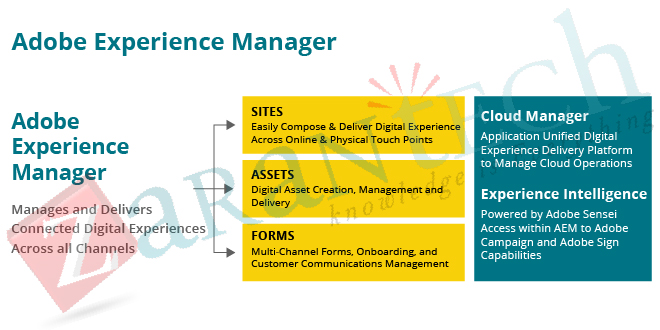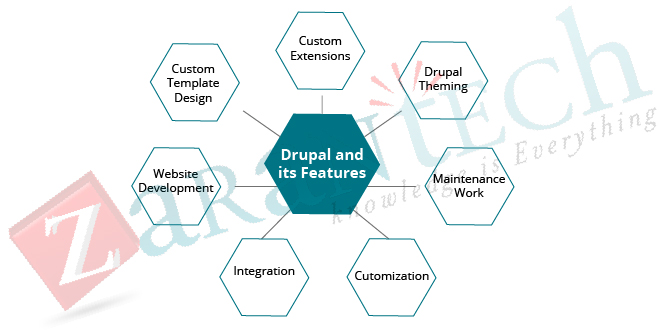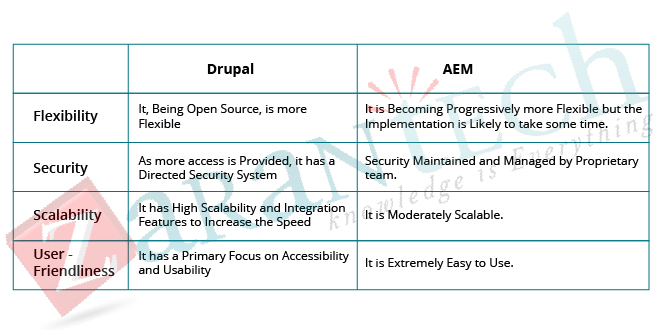AEM Vs Open Source Content Management
Category: Adobe Experience Manager (AEM) Posted:May 21, 2020 By: Ashley Morrison
In this article, we will be understanding the differences between AEM and Open Source Content Management. We will in a way help individuals and businesses choose technology that best suits their requirements. This article is not a debate on which technology is better, we are showcasing the features of these to two platforms and it’s up to our audience to choose the relevant one. So now let’s begin with learning what content management is.
Content Management
Content management is a new essential in the modern advertising world. Numerous software applications and systems have been developed in the past couple of years to promote this objective. With more services increasing in the digital space there is an increasing requirement to manage and optimize the content on this interface.
AEM and Drupal are two very popular examples of the private and open source systems of content management specifically. We can understand the nature of both these types of systems through the advantages and disadvantages faced by both in their usage up until now as discussed below.
Introduction to Web Content Management System (CMS)
As necessary as it is for all businesses and brand names to have a site for it to act as an entrance to their services, it isn’t unlikely that not everybody has the technological capacity or interest to be able to customize their websites. CMS permits you to add and update content and handle it, without any technical knowledge.
Why select Adobe Experience Manager (AEM) for your Web CMS?
Adobe Experience Manager (AEM) is a widely and commonly used CMS. Its popularity can be credited to the reality that AEM has numerous benefits in the way it is structured:
- It comprises five modules, including Sites, Assets, Mobiles, Forms, and Communities.
- It has machine learning features which can be important for making several marketing based decisions.
- It has additional customization attributes, which is preferable for any type of brand to develop a marketing method that can stand out.
- It is becoming a significantly open source which makes it affordable and versatile in type and framework.
- A single code foundation can be used to develop different applications with ease.
- Web content can be upgraded and tracked quickly with an effective system that informs you with all-important upcoming techniques.
- Adobe Forms can be made use of for security and tracking functions.
- Advanced purchases can be simplified and carried out conveniently.
- Adobe Community assists to develop an online interface for conversations and communications among individuals with the appropriate domain name.
- Valuable input in the form of feedback and ratings can be collected which is constantly beneficial for the development and improvement of the brand name as a whole.
Adobe Experience Manager Digital Trends.
Certain trends that can be taken into consideration with the changing technology and development make AEM a lot more appropriate in its use today. In the past year, artificial intelligence and machine learning have seen a growth spurt in the industry.
Anything which can instill AI attributes, therefore, by default comes to be extremely appealing for upcoming strategies in the future. Adobe Sensei can be seen to matter in this domain name. Smart labeling and other decision-making functions can be availed which makes it a relevant component [SD1] in the digital advertising and marketing world.
One more vital advertising and marketing element is the high flexibility of AEM. It can be conveniently customized right into a unique interface for different brands according to their demands, hence making it possible for the brand name to have a special identity.
The representation of the brand name in the online marketplace is significantly influenced by its on-line apparel. With AEM, various divisions instilling a wide range of features that are integrated to supply a single system that can take on the complicated job of advertising in addition to being exceptionally reliable in the growth and economics of the trade.
Why Acquia + Drupal is an Open resource alternative
Drupal is an open-source system with a content management framework. Acquia is a software-as-a-service business that offers paid Drupal solutions and also contributes in the form of codes freely to the Drupal community.

Acquia is built utilizing Drupal as an open-source platform. They are incorporated with numerous software programs to help with various functions. Acquia is among the leading open source systems existing today and can be considered as an option with the following features:
- It enables internet growth and also easy networking attributes, both of which are primary issues for the marketing approach.
- It offers efficient hosting and management facilities.
Essentially, there are several open resources WCM yet only Acquia can satisfy the present-day marketing criteria, for this reason, it practically is the only practically open-source alternative that is worth being thought about.
Drupal and its Features

- Among the earliest versions of Drupal called Drupal core was formulated with standard material management functions.
- It is sufficient because it is a sophisticated application program interface for developers while having easy setup actions and administration that require no specific skill sets.
- It assists in an auto-update function that informs the customer of any new components or security updates. This can be valuable in the field of content management. The faster the safety updates are used, the better it will be for the safe handling and the use of content.
- Data abstraction can also be guaranteed under Drupal. More recent updates of Drupal allow the user to make use of PHP data objects to abstract the database to ensure that the developer no longer needs to use SQL queries.
- There is increased accessibility in numerous ways which can be incredibly useful. The web accessibility is at an all-time high with an initiative at fixing the accessibility obstacles.
- Additionally, features like drag and drop, including labels and actively encouraging community are strong attributes to assist a CMS.
Open Source vs Closed Source Systems: Pros and Cons
Pros:
- In open-source systems, the source code is made available for public use. It can be altered and therefore, becomes much more versatile according to increasing needs.
- The open-source systems are free of cost which is a massive advantage.
- Closed source systems are developed privately and offered to the masses for profitable purposes.
- A license cost is included and some better upgrades and plans can be purchased ultimately.
- Closed source systems have a vast range of well-formulated functions with a dependable protection system.
Cons:
- Open up source systems are a lot more flexible to customization as the resource code can be conveniently customized and reinforced. Nonetheless, since it has unprecedented accessibility, this subjects its safety and security concerns.
- Without a high budget plan, they are barely comparable to features of closed systems.
- The expense, nonetheless, is certainly a drawback, along with the lack of flexibility and customization in closed systems.
Let’s compare AEM and Drupal in a tabular form

The Open Nature of Adobe
Adobe is a commercial WCM. It is a commonly observed trend for commercial CMS to be utilized with websites requiring a higher traffic price. There are several open-source embodiments which are made use of in AEM. As a result, contrary to common belief, it is not a completely closed source format system. It is just one of the most open WCM available in today’s situation.
The costs incurred using AEM
Adobe Experience Manager is chargeable based on the various features that are availed and therefore can be fluctuating. The price can vary from $250,000 to $1,000,000 annual. Though there are additional costs for developing and application, Adobe is still considered among the affordable sellers of a similar standard of CMS.
Conclusion
Thus, taking into consideration all the aspects, it can be said that Adobe Experience Manager stands to be an extremely reputable and efficient option for content management among its contemporaries. It provides the dual benefit of having the ability to be open yet guarantee a high level of safety and also customization. Drupal, on the other hand, is a lot more flexible and receptive to all its functions. These aspects need to be observed while considering it for the web and content management purposes.
We hope this article helps you understand both the platforms better, and help you decide which platform suits the requirements of your organization. For more such engaging and informative blogs on AEM feel free to visit our website.
Also if this article has triggered your curiosity to know more about this topic, you’re in the right place. At Zarantech, we offer an online training program on AEM, conducted by experienced and sought after SMEs. Be a part of our learning community and emerge out with a strong understanding of the subject which will help you land a lucrative job. Happy learning!





 99999999 (Toll Free)
99999999 (Toll Free)  +91 9999999
+91 9999999